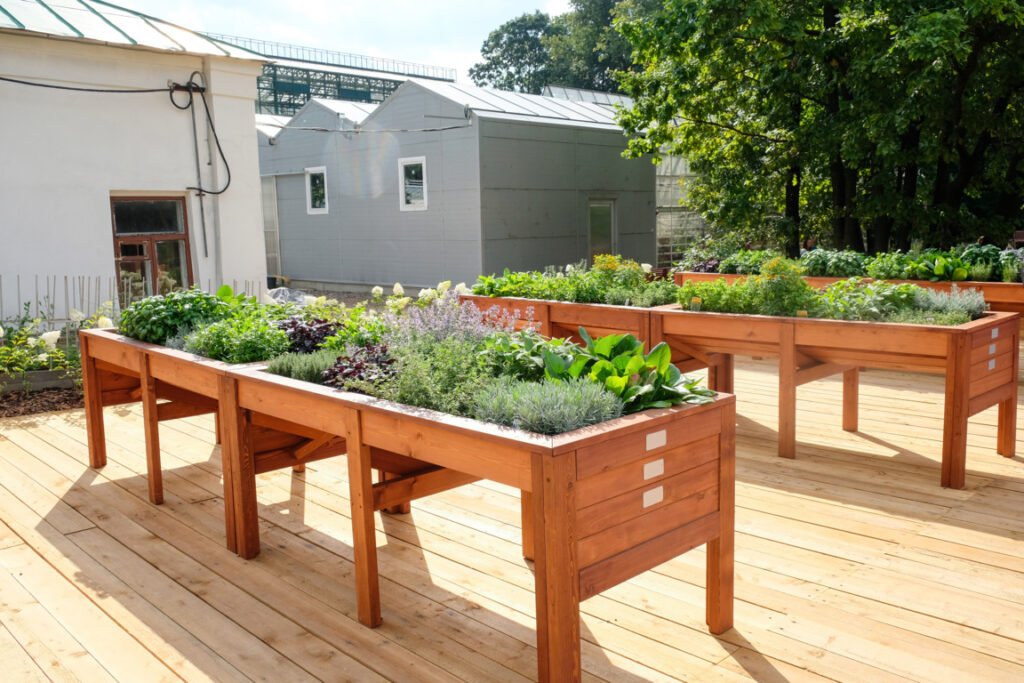
Gardening is a relaxing, recreational activity for most folks. But it still requires hard work, lots of kneeling, bending, crouching and repetitive motions. There’s no way around that. By building your own waist high raised garden beds you can do away with a lot of the aches, pains and uncomfortable positions associated with gardening.
Working many years on a farm, I can testify that these pains, injuries and sore muscles accumulate over time. Many of them are with me to this day.
I can recall spending entire 10 hour days crouched down or bent over, reaching to pull weeds or harvest crops. At other times, during apple picking season, I would spend hours on end going up and down a ladder. Always stretching, reaching and straining upward to pick the fruit, all while being weighed down by the 40 pound bucket of apples strapped to my chest.
Talk about working against gravity.
If only those fields and fruit trees were at waist height, I could be pain free today!
However, most gardeners don’t have the desire, or need, to go to these extremes. Still, there are many reasons to prioritize ergonomics and lighten the load of tasks that add wear and tear to the body. Besides, there are even more practical benefits to building your own waist high raised beds.
Read on to find out more, I have a feeling we can encourage you to give them a try!
The Benefits of Waist High Raised Garden Beds
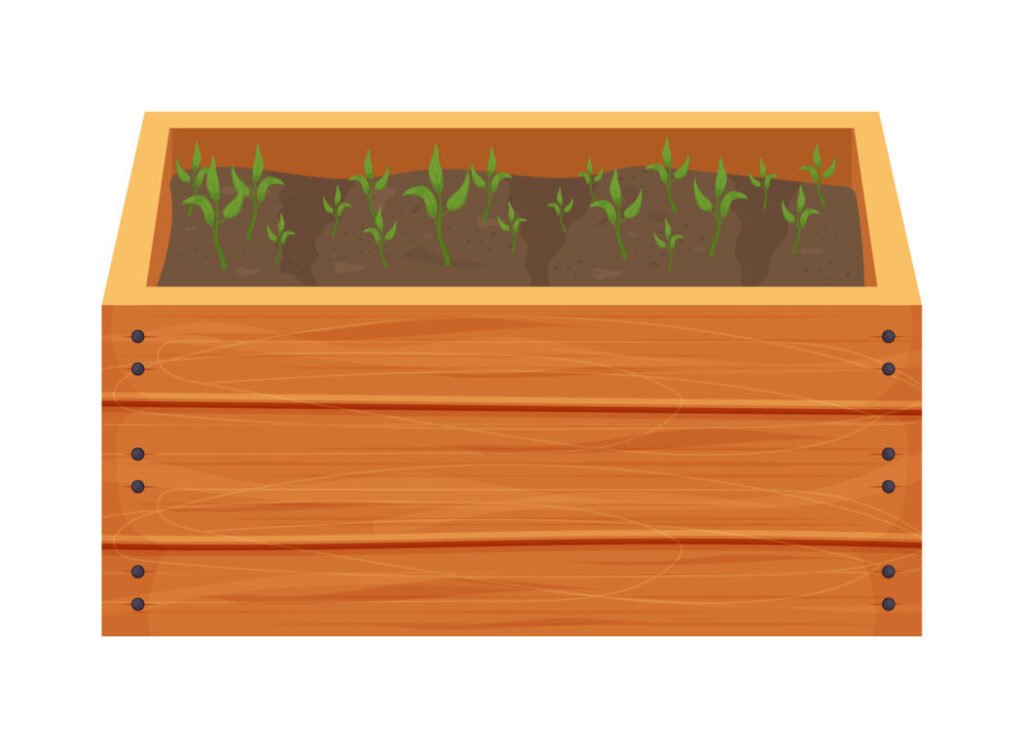
We’ve mentioned the physical convenience of waist high beds, but what about the other advantages?
- They prevent awful pests like slugs and other ground critters from reaching your precious fruits, vegetables and herbs. They can also be covered or enclosed quite easily to protect from cold weather, birds and other wildlife.
- The extra height of the raised bed will improve drainage and maximize air circulation, two critical aspects for keeping your plants happy.
- Depending on the size and design, waist high beds can be portable. Conveniently move them to different locations, or bring indoors during cold winter months.
- Raised beds maximize space. Plants can be cultivated intensively, producing large yields. An elevated bed with legs provides storage space underneath. Here you can keep garden supplies or grow more plants!
- They can be kept on balconies or patios of homes that don’t have access to outdoor space. Imagine growing beautiful, bushy tomato plants in the middle of the city!
- Crops can be separated and easily rotated year to year.
- Weeds will not be an issue because the fresh soil you add will be weed seed free. Even the ones that do sprout up will be easy to identify and pull out.
- The soil doesn’t require annual tilling, just the addition of compost or extra soil from time to time.
- Soil stays warmer for a longer period of time, extending your season on both ends.
- Waist high raised beds make the activity of gardening possible for disabled, elderly or otherwise immobile people who still want to engage in their healthy hobby.
DIY Waist High Garden Bed Plans
There is an abundance of crafty and creative horticulturists in the world of gardening, so there is no shortage of ideas when it comes to planning a waist high raised garden bed. Some of the most popular materials and designs are:
- Corrugated Metal
- Stone
- Plastic Bins
- U Shaped
- Beds with a trellis
Let’s dig a little deeper into the details of building out these specific types of waist high beds.
Corrugated Metal Raised Beds
Corrugated metal is a material commonly used for roofs of barns, sheds and homes. It’s also extremely popular when it comes to building extra tall raised beds. And no wonder, it’s lightweight, sturdy, durable and won’t rust. The metal sheets don’t overheat the soil as you might think.
Beds made of corrugated metal can rest on the ground or can be built with legs and a frame. The most basic structure can be made simply with 8’ x 25” sheets of the metal and 2×4 wood planks serving as the corner posts. Run the numbers and make cuts depending on the height and dimensions that serve you best.
Follow the instructions on how to create Inexpensive Raised Garden Bed Ideas for Building Your Own Raised Beds.
Choose the location for your beds ahead of time and make sure that it’s level. Map out and measure the figures for your bed. From this point you can get creative and build the bed of your dreams!
The finished product looks sleek with the metal gleaming in the sun. It’s a perfectly safe material to garden with and will keep you upright as your plants grow happily in their new home.
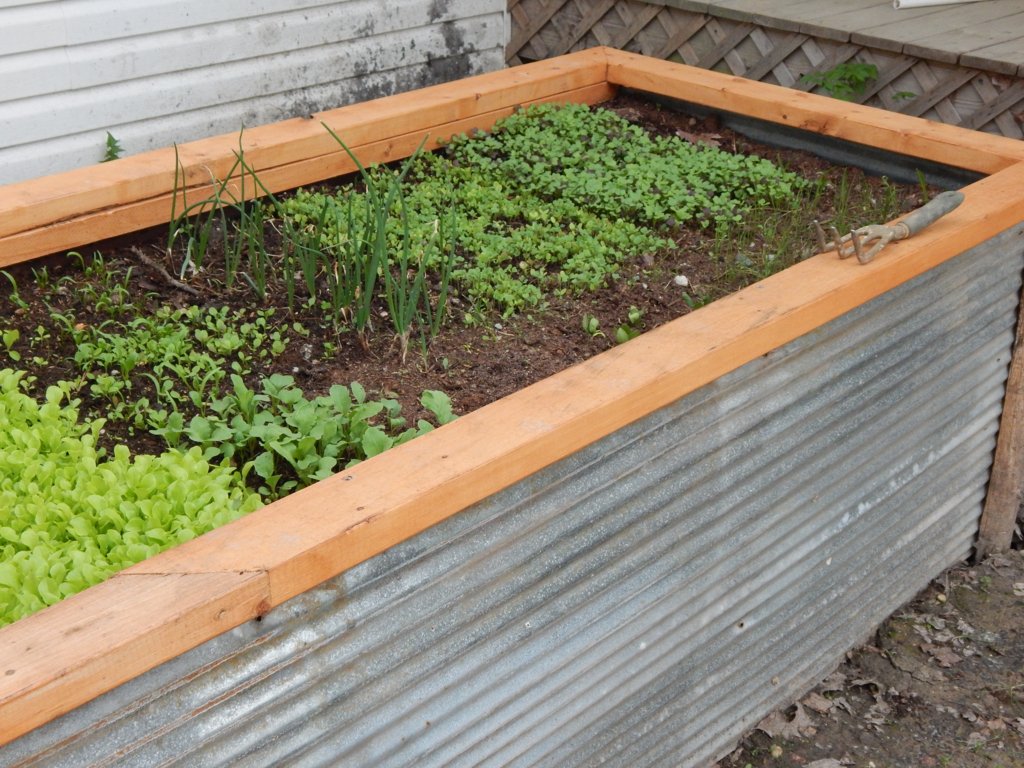
Stone or Concrete Waist High Beds
Building a waist high bed from stone may seem like a lot of heavy lifting, but your grunt work will be worth it.
If you live in an area that has rocky soil, chances are you have lots of large stones laying around.
Why not put them to good use?
Like the settlers of old New England stacking stone walls, the same technique can be applied to building raised beds. Made from natural stone, raised beds look beautiful. The stones break down gradually over time, depositing their minerals into your soil.
Now, to have enough rocks and stones laying around may not be realistic for some. A similar approach would be to use concrete blocks, pavers or bricks. Stack them high, to the level that is most comfortable to you. Once complete, gardening on your hands and knees will be a distant memory.
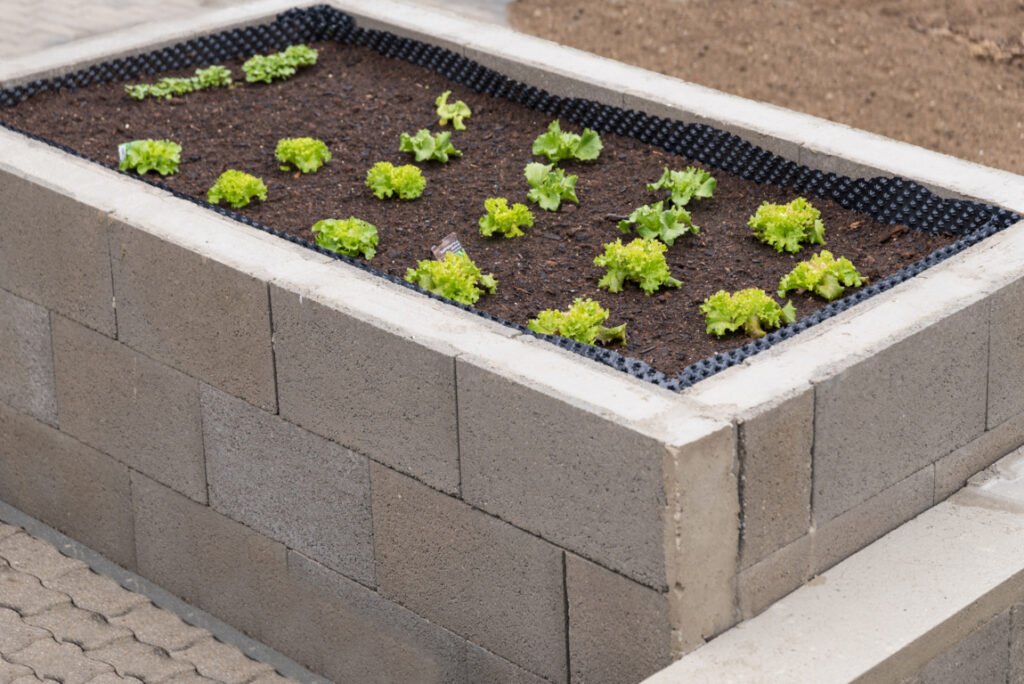
Plastic Bins
Plastic bins are another cheap option for waist high garden beds. Typical tote bins you find at home goods stores make excellent little raised beds or planter boxes.
One intriguing design is built with legs and a frame, elevating them up off the ground. It’s like a nest for the bins to rest in, perched at waist level for easy access. The bins are interchangeable; they can slide, be removed and replaced with ease.
Plastic holds a lot of moisture, so punch a few drainage holes in the bottom. Then, fill your bins with soil and plant them out. If you ever need to transport or relocate them, just pop them out of their frame and move to a convenient location.
U Shaped Raised Beds
The horseshoe shape is functional and allows you to reach all parts of the bed from a central location. U shaped waist high raised beds are basically three continuous rectangular beds with an opening on one end. It’s a clever design that makes watering, weeding and tending to your plants quite convenient.
U shaped beds can be made from long wood planks, concrete blocks, or even by combining three galvanized steel tubs. Construction of this design may be trickier, more involved and a bit more expensive than other plans. If you’re up for the challenge, follow this link where you’ll find clear instructions.
The main idea is to have an easy entry point to access all areas of the bed. This is especially useful for people with limited mobility. Maximize space and take advantage of the closed end of the U by attaching a trellis to it for vertical growing.
Raised Beds With a Trellis
Fastening a trellis to any raised bed is a great idea. It is one of the easiest ways to increase your growing area. There’s only so much room on the surface of the bed, why not grow upwards?
Plant naturally climbing plants like pole beans or cucumbers and watch them zoom up the structure. Add a trellis of rod iron, wooden lattice or stakes with twine to any shape or size bed. Make sure the trellis is only as tall as you can reach, otherwise you’re going to need to grab a ladder!
If you’re considering growing vertically, always put the trellis on the north side of the bed. This way, as the sun makes its daily trip through the sky, the trellis and climbing crops won’t throw shade at your other plants.
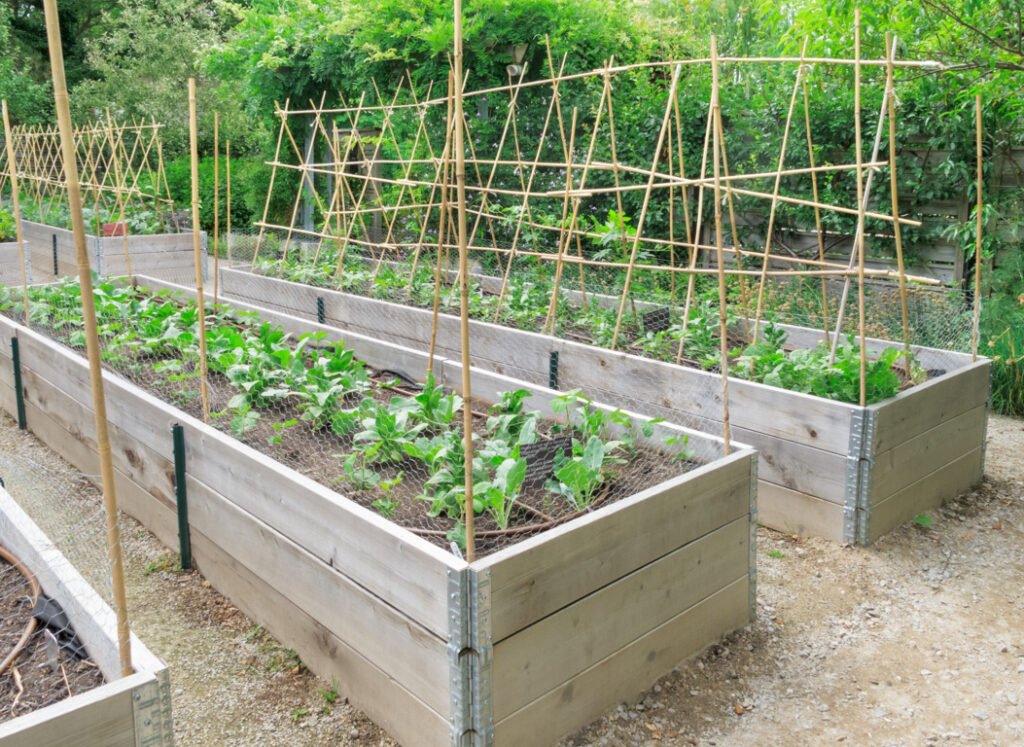
Build Waist High Beds for a Healthy Garden and Body
The number of designs for waist high raised beds is infinite. So the best place to start is assessing your space and needs. Then, determine what materials are accessible to you and what you’re most comfortable working with.
Almost any DIY project can be tackled with the right mind set and resources. Building your own waist high beds is a task totally worth undertaking. You’ll reap rewards for years to come, well worth the time, energy and expense invested upfront.
Leads to other sites have been provided for finding detailed plans to help make your dream garden a reality. We hope you’ve found in this article some suggestions that inspire you to get to building your own waist high raised garden beds. Your plants (and back!) will thank you for it.
Frequently Asked Questions (FAQ)
What goes at the bottom of waist high garden beds?
A great tactic for establishing a healthy environment for your bed is by putting some organic material at the bottom before adding the soil. A nice layer of straw, shredded leaves, wood chips or grass clippings will improve drainage while breaking down slowly, enriching the soil over time.
Is it more economical to buy or build a waist high garden bed?
Building your own is almost always the cheapest route. Raw materials at a home improvement store will be much more cost effective than buying a pre-made raised bed. Supplies for constructing a bed can also be salvaged for free and recycled.
Is it necessary to replace the soil in waist high garden beds every year?
The soil in the raised bed will inevitably break down and compress after many waterings, but that doesn’t mean it needs to be completely replaced. A seasonal sprucing up would be helpful though. In the fall and spring a healthy dose of compost can be worked into the bed to keep the soil healthy and nutrient rich.
How deep should the soil be in an elevated raised bed?
For the best results, your raised bed should have at least 12” of soil in it. 18-20” is even better. This way your plants have the ability to grow extensive root systems.
What is the best height for a waist high raised garden bed?
Elevated raised beds should be about 3’ off the ground for easiest access. That being said, the height can be customized to best suit your personal needs.


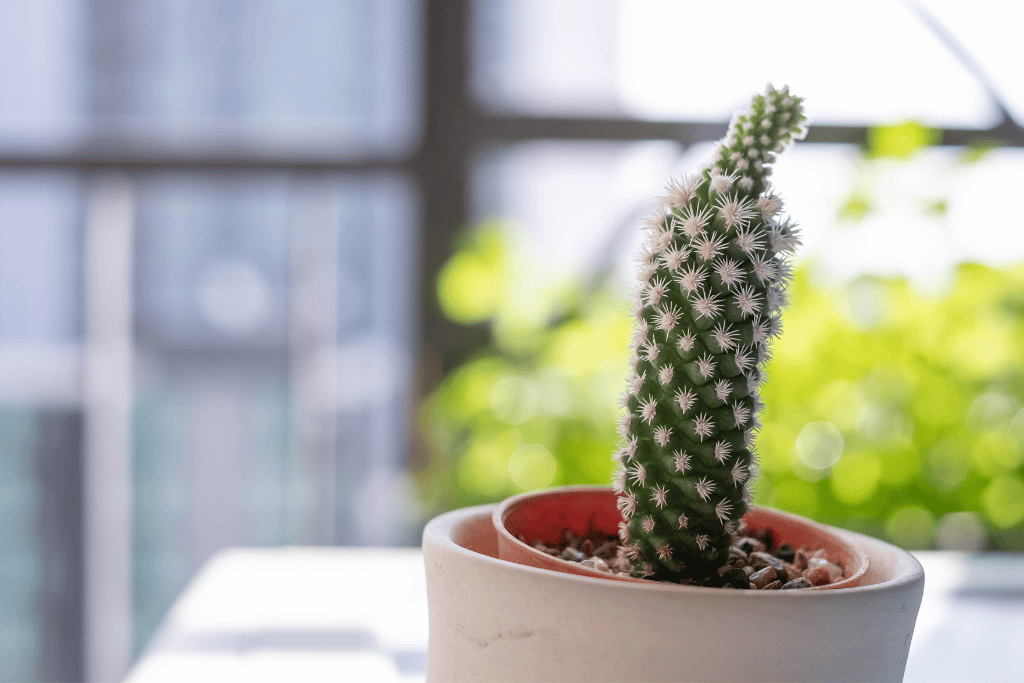

Pingback: Which is the Best Wood for Raised Garden Beds? – Buyco – Buy Now our High Quality Products and Enjoy 3 Days of Free Shipping